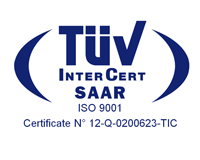Radiolabs contribution to the RAILGAP project

An accurate digitalisation of railways lines requires a trustable reference “ground truth” and a digital map, indispensable tools for the interoperability and standardization of the GNSS into ERTMS train control system. Today these set of accurate informations are recorded manually with inevitable logistic problems. RAILGAP (RAILway Ground truth and digital mAP) – an EU H2020 project funded by EUSPA – recently concluded – has developed and validated an innovative process and methodologies for collecting and processing data with trains on regular services to avoid to installing trackside equipment that otherwise would impact on the train circulation and costs.
Radiolabs was mainly responsible for defining, developing, and verifying the trackside digital map toolset. Particularly, with its partner University Roma TRE has developed a system able to create a digital map of the trackside objects along a rail segment compliant with the methods, requirements and design criteria agreed with the RAILGAP team coordinated by RFI. The other partners being Hitachi Rail, ADIF, CEDEX, DLR, INECO, RINA, Trenitalia, University Gustave Eiffel, UNIFE and ASSTRA.
A toolset to automatically locate the relevant objects within railway scenes has been developed and validated. It processes the data acquired by the stereo cameras, LIDAR, GNSS and IMU sensors installed on the train.
The automatic object detection process based on images collected by the stereo cameras makes use of deep learning algorithms. The advantage is its capability to improve the performance and reliability at each train riding along the same line at different hours and environmental conditions.
This new system has been evaluated by first estimating the performance achievable on the public RAILSEM19 dataset and then with the real data collected in operative conditions in Spain along the Pizarra-Los Prados railway line during February 2024.

This approach will also contribute to exploit the potential of optical guidance whose demand is rising exponentially fuelled by the reduction of sensors costs and the increase of processing capabilities. Especially for the fast and reliable obstacle detection required by the driverless trains and in perspective to strengthen the resiliency of vision based navigation systems by relying on digital maps, optical detection and artificial intelligence




